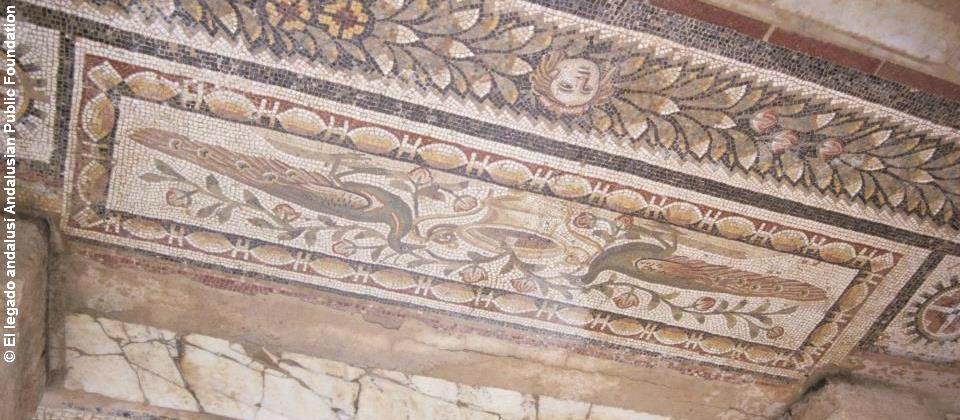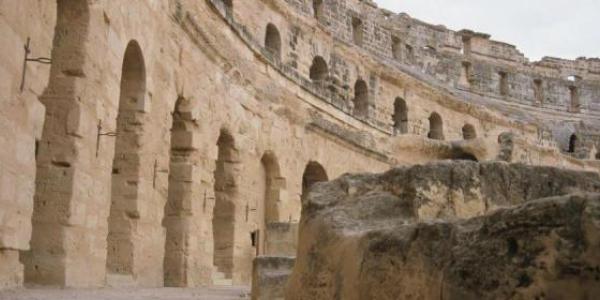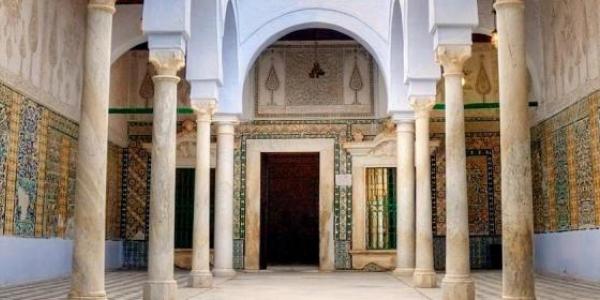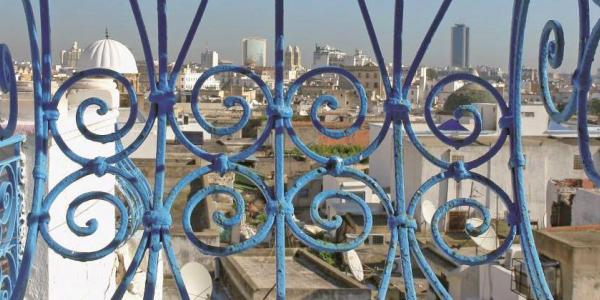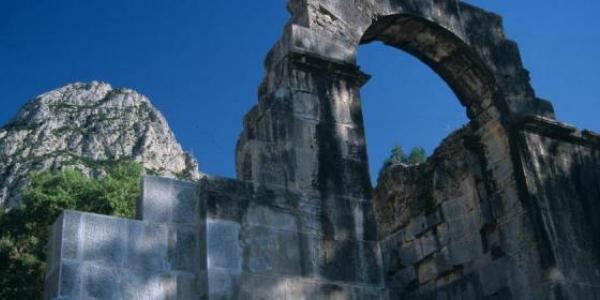The ancient city of Thysdrus, one of the richest settlements in Roman Ifriqiya (Tunisia’s old name) when the Roman Empire was at its apogee, is located in the actual city of El Jem.
During Caesar’s period, Thysdrus was little more than a small market town, but within two centuries it became one of the richest settlements in the Province, challenging Hadrumetum (modern-day Sousse) for the status of second city after Carthage. The town owes its success to the olive trees and the olive oil trade.
Located some fifty kilometres from the coast, Thysdrus was the hub of a road network through which the wealth of Central Tunisia was drawn. This privileged position gave the town considerable status as a market center for agricultural products. It also became a place where traders and merchants gathered to bargain.
As in any busy city, it was equipped with an imposing amphitheatre, probably dating from the early 3rd century. It was preceded by two other buildings of the same type, also visible, but modest in size, which were probably the drafts of the final outcome.
However, El Jem became a legend when the Berber heroine “El Kahena” fought the new arrived Arabs, taking refuge in the Roman amphitheatre, which was transformed into a fortress. At subsequent periods in history the massive structure served as a shelter for those who challenged the existing established authority. To crush the rebellion, there was only one solution: partially dismantling the building with concentrated cannon fire.
Much weakened, El Jem became little more than a humble village built around the proud ruins of the amphitheatre. It was not until more recent years when demographic forces and a change in Tunisian society gave a certain impulse to urban development, that El Jem was given a new lease of life.



